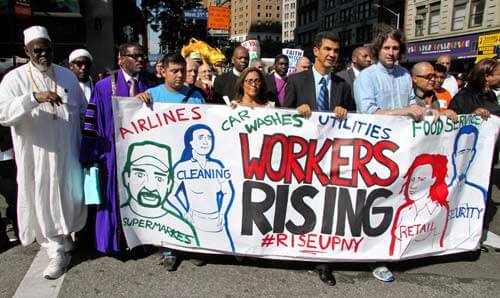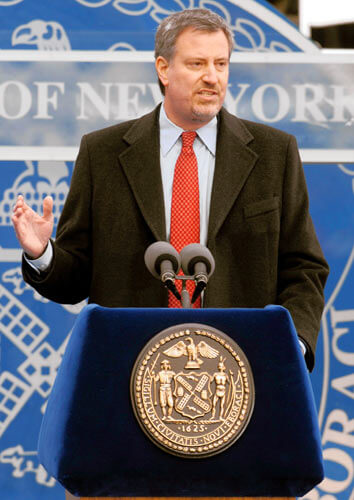A $100 million plan announced this month by New York City and HUD to retrofit nearly 300 New York City Housing Authority (NYCHA) buildings will be important for the environment, our city’s affordable housing inventory and tenants.
Part of Mayor de Blasio’s “One City: Built to Last” plan to reduce greenhouse gas (GHG) emissions 80 percent by 2050, the initiative aims to enhance energy efficiency in NYCHA buildings. Brooklyn and Staten Island are home to a combined 63,197 NYCHA apartments including the Coney Island, Gowanus, Farragut and Stapleton Houses.
According to findings from the mayor’s report on the “Inventory of New York City Greenhouse Gas Emissions,” 70 percent of GHG emissions in the Big Apple in 2013 were caused by buildings’ use of heating fuel, natural gas, electricity, steam and biofuel. Throughout the country, commercial and residential buildings accounted for only 12 percent of those emissions in the same year, according to the U.S. Environmental Protection Agency.
The bulk of NYCHA developments were erected during the post-war construction boom between 1945 and 1965 and as they aged, the piping, heating and ventilation systems in similar type buildings have reached their expected useful life spans.
These complexes are vital, valuable sources of affordable housing for hundreds of thousands of New Yorkers, so the City and NYCHA focusing its efforts on what is hidden behind the ceilings and walls of apartments should be commended.
The critical operating systems of each NYCHA complex are essentially its heart, lungs and arteries. When pipes that had an original life expectancy of half a century carry on much beyond that span, they begin to fail, leak and contribute to wasting energy and causing pollution.
Despite only a nine percent rise in energy consumption by NYCHA over the last decade, rising energy prices have driven its utility costs up by 64 percent. The mayor and the authority’s action, facilitated by HUD, seeks to reverse this growing expenditure.
One of its sustainable, long-term solutions to lengthen the life and boost energy efficiency in buildings is the installation of new copper piping to last for the coming 70 to 100 years.
Much like the arteries leading to a human heart, with age the insides of pipes calcify and clog, leading to blockages and ruptures. This can be a major contributor to inefficiencies and climbing utility costs.
With regularity, steamfitters, insulators and other trade union workers have modernized the inner workings of similar post-war housing complexes in our region. A prime example is the Penn South Houses in Midtown, which were dedicated in 1962 by President John F. Kennedy.
That complex of buildings has long served working-class New Yorkers, providing quality affordable housing. About a decade ago managers there recognized that more units had been experiencing leaks and floods, so they took action. The restoration significantly lengthens the lifespan of the 15-building high-rise complex, while resulting in an energy use reduction of 15 percent each and every year. It’s an investment that pays for itself in cost and energy savings in just a matter of years.
For NYCHA some estimates say its reinvestment could result in over $86 million in annual utility savings. For taxpayers that’s a no-brainer, for the environment it’s a necessity and for tenants it’s a win-win.
Richard Roberts has 32 years of experience in the piping industry as business agent at large for the 8,000 member Steamfitters Local 638. Steamfitters design, install and maintain critical piping, heating, ventilation and cooling systems in tens of thousands of high-occupancy commercial, retail and residential buildings throughout the New York region.



























